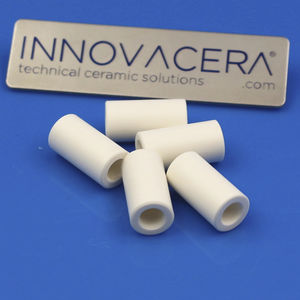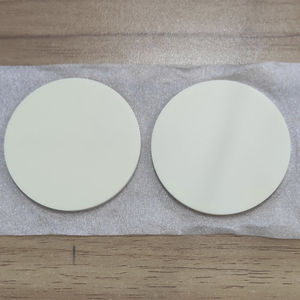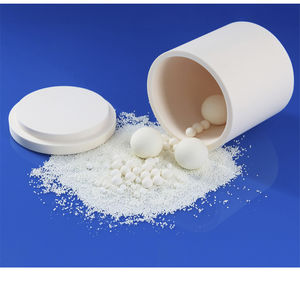
- Materials - Tools - Components
- Semi-finished products
- Alumina ceramic
- Xiamen Innovacera Advanced Materials Co., Ltd
- Company
- Products
- Catalogs
- Projects
- News & Trends
- Exhibitions
Alumina ceramic cylindrical

Add to favorites
Compare this product
Characteristics
- Composition
- alumina
- Other characteristics
- cylindrical
Description
In the vast landscape of electronic components, ceramic resistor cores stand as pillars of reliability and performance. These advanced ceramic structures, crafted from premium materials like 99.5 Alumina and 95 Alumina, are the backbone of numerous electronic devices, ensuring precision, durability, and efficiency. Today, let’s delve into the world of Ceramic Resistor Cores, exploring their unique features, applications, and why they’re a game-changer in the electronics industry.
The Essence of Ceramic Resistor Cores
Ceramic resistor cores, affectionately known as ceramic resistor bodies, are the heart of fixed resistors. Crafted from high-purity alumina (Al2O3) in either 99.5% or 95% purity, these cores boast unparalleled surface quality and consistency. Their cylindrical shape and robust construction make them ideal for efficient heat dissipation, thanks to their exceptional thermal conductivity. This not only enhances the reliability of the resistors but also elevates their overall performance, ensuring a smooth and stable flow of electricity.
Features That Set Alumina Ceramic Cores Apart
Lower Noise Factor: Alumina ceramic cores minimize electrical noise, ensuring cleaner signals and improved audio/video quality in electronic devices.
Stable Resistance: Their resistance values remain consistent over time and across varying temperatures, making them reliable in demanding applications.
Good Electrical Shock Loads: Capable of withstanding sudden electrical surges, these cores protect circuits from damage, enhancing overall system safety.
Catalogs
No catalogs are available for this product.
See all of Xiamen Innovacera Advanced Materials Co., Ltd‘s catalogsOther Xiamen Innovacera Advanced Materials Co., Ltd products
Alumina Ceramic
Related Searches
- Ceramic
- Insulation ceramic
- Alumina ceramic
- Ceramic plate
- Tubular ceramic
- Substrate
- Ceramic rod
- High-temperature ceramic
- Protective ceramic
- Ceramic sheet
- Ceramic substrate
- Substrate for the electronics industry
- Boron nitride ceramic
- Silicon nitride ceramic
- Zirconia ceramic
- Tile ceramic
- Ceramic stick
- Ceramic pipe
- Thermal pad
- Thick-film substrate
*Prices are pre-tax. They exclude delivery charges and customs duties and do not include additional charges for installation or activation options. Prices are indicative only and may vary by country, with changes to the cost of raw materials and exchange rates.



























